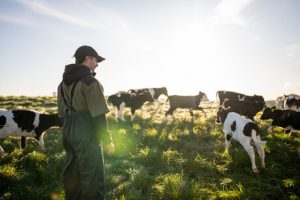
A mixed poultry farm in Western Australia’s South West has been placed under a pest control notice after a low pathogenic strain of avian influenza was detected.
The farm reported chickens had become unwell three weeks ago, leading to the case being investigated by the Department of Primary Industries and Regional Development (DPIRD).
Avian influenza can be high or low pathogenic.
The case detected in WA has been confirmed as the low pathogenic H9N2 type.
In Victoria, authorities say there is no evidence of transmission after a child tested positive to the H5N1 strain in March, which can jump across species.
Hundreds of thousands of birds have also been euthanased after the H7N3 strain of the virus was found on a farm in Victoria’s west.
Wild bird interaction risk
Wild birds can carry the high and low strains of avian influenza.
DPIRD acting chief vet Katie Webb said some chickens at the mixed poultry farm in WA had been euthanased as a result of the H9N2 outbreak.
“We do surveillance for influenza in wild birds regularly. We do know H9 low pathogenic strains occur in wild birds,” Dr Webb said.
“Occasionally we do find it has transmitted from wild birds into poultry. This is one example where we have picked that up.”
Dr Webb said the remaining birds at the farm were healthy, but DPIRD would continue its inspections and testing, and the property would remain under a pest control notice, which managed the movement of animals and products off the farm.
She said DPIRD was working with the farmer to reduce the likelihood of disease spread and future transmissions from wild birds.
“The appropriate response depends upon the strain that has been identified,” Dr Webb said.
“In the particular case in the South West, it was one of low pathogenicity and less concerning strains from a poultry disease point of view, and that impacts the way we approach managing it with the property.”
Consider biosecurity
Ms Webb said the case was a timely reminder to the poultry industry and backyard chicken owners to be vigilant about the risk of bird flu transmission from wild birds.
“Understand the importance of really good biosecurity practices to help protect from that potential pathway of disease introduction” she said.
“In a backyard setting, that’s things like restricting contact with wild birds as much as possible, keeping poultry sheds and yards clean to minimise the attractiveness to wild birds, placing feeders in sheds, and quarantining new birds before introducing them to a flock.”
Unusual signs of disease or mass mortalities in domesticated birds, wild birds, or other wildlife should be reported to the Emergency Animal Disease Hotline on 1800 675 888.
You can now read the most important #news on #eDairyNews #Whatsapp channels!!!
🇺🇸 eDairy News INGLÊS: https://whatsapp.com/channel/0029VaKsjzGDTkJyIN6hcP1K
























